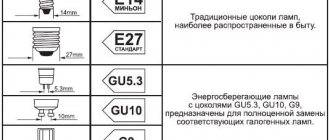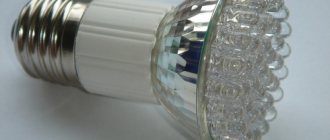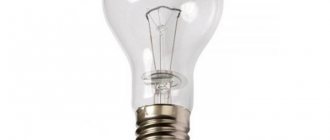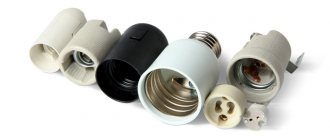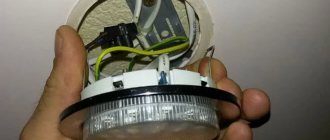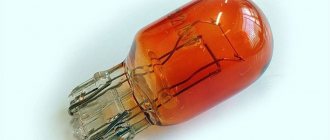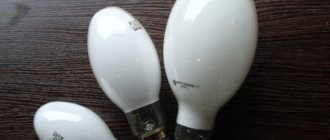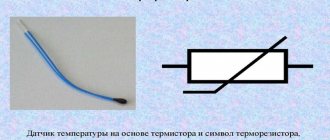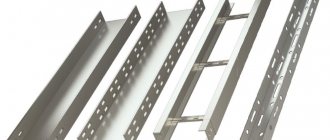Using the reference data from the table below with the technical characteristics of the most popular SMD LEDs, you can calculate and evaluate their lighting capabilities when making backlights and luminaires yourself, or by purchasing ready-made light sources. Using the data from the table, you can determine the parameters of the LED strip if there is no marking on it.
By clicking on the blue inscription indicating the type of LED, you can view the datasheet from the manufacturer, which is stored directly on the website. The datasheets provide more detailed technical characteristics of ordinary and ultra-bright LEDs, taking into account the amount of current flowing through them and the ambient temperature.
| Reference table of the main technical characteristics and standard sizes of the most popular brands of SMD LEDs used for lighting with datasheets from manufacturers | |||||||
| Appearance | LED type | Glow color | Size, mm | Luminous flux, lm | Angle, degrees | Current, mA | Voltage, V |
| LED-508H184WC-HD | white | ∅5,0 | 0,5 | 15 | 20 | 2,8-3,6 | |
| LED-508H238WC-HD | |||||||
| LED-508H256WC-HD | |||||||
| LED-HK5H4ULC-WW | white warm | ∅5,9 | 2,5-10,4 | 160 | 20 | 2,1-3,4 | |
| LED-HK5H4ULC-W | white | 2,5-10,4 | |||||
| LED-HK5H4UBC | blue | 3,1-4,4 | |||||
| LED-HK5H4UGC | green | 2,6-10,4 | |||||
| LED-HK5H4URC | red | 3,1-4,4 | |||||
| LED-HK5H4UYC | yellow | 3,1-4,4 | |||||
| LED-HK5H4UOC | orange | 3,1-4,4 | |||||
| Super bright | LED-WW-SMD2835 | white warm | 2,8×3,5 | 50 | 120 | 150 | 2,9-3,3 |
| LED-NW-SMD2835 | neutral white | 55 | |||||
| LED-PW-SMD2835 | pure white | 60 | |||||
| LED-CW-SMD2835 | cold white | 60 | |||||
| Super bright | LED-WW-SMD3014 | white warm | 3,0×1,4 | 11,5 | 120 | 30 | 2,1-3,4 |
| LED-NW-SMD3014 | white | 11,5 | |||||
| LED-CW-SMD3014 | cold white | 12,0 | |||||
| LED-B-SMD3014 | blue | 0,85 | |||||
| LED-G-SMD3014 | green | 2,5 | |||||
| LED-Y-SMD3014 | yellow | 1,88 | |||||
| LED-R-SMD3014 | red | 2,45 | |||||
| LED-O-SMD3014 | orange | 0,66 | |||||
| LED-WW-SMD3020 | white warm | 3,0×2,0 | 5,0 | 120 | 20 | 2,1-3,4 | |
| LED-NW-SMD3020 | white | 5,5 | |||||
| LED-CW-SMD3020 | cold white | 5,5 | |||||
| LED-B-SMD3020 | blue | 0,87 | |||||
| LED-G-SMD3020 | green | 3,1 | |||||
| LED-Y-SMD3020 | yellow | 0,7-2,2 | |||||
| LED-R-SMD3020 | red | 0,85 | |||||
| LED-O-SMD3020 | orange | 0,5 | |||||
| LED-WW-SMD3528 | white warm | 3,5×2,8 | 4,5-5,0 | 120-140 | 20 | 2,8-3,2 | |
| LED-CW-SMD3528 | white | 4,5-5,0 | 2,8-3,2 | ||||
| LED-B-SMD3528 | blue | 0,6-0,85 | 2,8-3,2 | ||||
| LED-G-SMD3528 | green | 2,8-3,5 | 2,8-3,2 | ||||
| LED-Y-SMD3528 | yellow | 1,2-1,6 | 1,8-2,0 | ||||
| LED-R-SMD3528 | red | 1,2-1,6 | 1,8-2,0 | ||||
| LED-RGB-SMD3528 | RGB | 3,5×2,8 | 0,6 | 120-140 | 20 | 2,0-2,8 | |
| 1,6 | 20 | 3,2-4,0 | |||||
| 0,3 | 20 | 3,2-4,0 | |||||
| LED-WW-SMD4008UWC Side glow | white | 4,0×0,8 | 5 | 120 | 20 | 3,0-3,6 | |
| LED-WW-SMD4014 | white warm | 4,0×1,4 | 22 | 120 | 60 | 2,8-3,4 | |
| LED-PW-SMD4014 | white | 23 | |||||
| LED-CW-SMD4014 | cold white | 23 | |||||
| LED-SMD4020 | white | 4,0×2,0 | 72 | 120-140 | 150 | 6,0 | |
| LED-WW-SMD4530-1 | white warm | 4,5×3,0 | 70 | 120-140 | 600 | 2,9-3,8 | |
| LED-WW-SMD5050 | white warm | 5,0×5,0 | 10,0-12,0 | 120-140 | 3×20 | 3,2-3,4 | |
| LED-W-SMD5050 | white | 11,0-14,0 | 3,2-3,4 | ||||
| LED-B-SMD5050 | blue | 2,0-2,5 | 3,1-3,6 | ||||
| LED-G-SMD5050 | green | 8,0-8,5 | 3,1-3,5 | ||||
| LED-Y-SMD5050 | yellow | 4,5-5,0 | 1,9-2,2 | ||||
| LED-R-SMD5050 | red | 4,5-5,0 | 1,8-2,2 | ||||
| LED-RGB-SMD5050 | RGB | 5,0×5,0 | 1,6 | 120-140 | 20 | 1,6-2,0 | |
| 2,5 | 20 | 2,8-3,2 | |||||
| 0,6 | 20 | 2,8-3,2 | |||||
| LED-WS2812S with PWM controller WS2811 | RGB | 5,0×5,0 | 2,5 | 120-140 | 20 | 1,8-2,2 | |
| 5,4 | 20 | 3,0-3,2 | |||||
| 1,2 | 20 | 3,2-3,4 | |||||
| LED-WS2812B with PWM controller WS2811 | RGB | 5,0×5,0 | 2,5 | 120-140 | 20 | 1,8-2,2 | |
| 5,4 | 20 | 3,0-3,2 | |||||
| 1,2 | 20 | 3,2-3,4 | |||||
| LED-SMD5630-05 | white | 5,6×3,0 | 40 | 120 | 150 | 3,3 | |
| LED-SMD5730-05 | white | 5,7×3,0 | 45 | 120 | 180 | 3,1-3,3 | |
| LED-SMD5730-1 | 110 | 350 | |||||
| LED3500Am1W-A120 | white warm | ∅8,0 | 40-60 | 120-140 | 350 | 3,2-4,0 | |
| LED6000Am1W-A120 | white | 75-85 | 3,0-4,0 | ||||
| LED470Am1W-A120 | blue | 15-20 | 3,2-4,0 | ||||
| LED515Am1W-A120 | green | 40-50 | 3,2-4,0 | ||||
| LED625Am1W-A120 | red | 30-40 | 2,0-2,8 | ||||
| LED Luminus SST-50 | white | boards ∅21 | 100 | 125 | 1750 | 3,2 | |
| LED Luminus SST-90 | white | boards 10×11 | 1300 | 120 | 3150 | 3,25 | |
| LED Luminus CSM-360 Consists of 4 SST-90 | white | boards 36×36 | 2100 | 115 | 3150 | 13,14 | |
| LED Cree-XHP50 Consists of 4 led | white | 5×5 | 2546 | 120 | 3000 | 6 | |
| 1500 | 12 | ||||||
| LED Cree-XHP70 Consists of 4 led | white | 7×7 | 4022 | 120 | 4800 | 6 | |
| 2400 | 12 | ||||||
The electrical diagram of the arrangement of crystals in the LED-RGB-SMD5050 LED and the diagram of its connection in the LED strip is given in the website article Connecting RGB LED strips.
Currently, the overwhelming number of lamps, luminaires, LED strips and modules are manufactured using one of the types of LEDs shown in the table. The service life of SMD LEDs, according to manufacturers, is at least 80,000 hours.
General structure and principle of operation of SMD LEDs
This type of LED is a board on the surface of which a crystal grown using metal-organic epitaxy technology is fixed. The most important stage of production is the creation of contacts and their coating with metal films.
Each diode is mounted in a housing, equipped with leads, and coated with a compound that removes or emits light. White LEDs are coated with phosphor. A dome is installed on the crystal to focus the light. Heat is removed through the substrate; if the diode is powerful, a radiator is installed. Electrical current is converted into light in a pn junction (just like any other diode).
The main advantage of the SMD design is the maximum proximity of the crystal to the substrate, which removes heat. One or more LEDs are mounted on one board. If there are a large number of them in one lighting device, the light is powerful enough without installing additional optical systems. Ordinary glass is sufficient, the losses due to which do not exceed 8%.
SMD packages vary in shape and size and are directly connected to the circuit board using a pad.
Attention! Due to its simplicity, installation can be performed by a non-specialist.
Volt-ampere characteristic of a zener diode
The current-voltage characteristic (volt-ampere characteristic) of a zener diode is similar to the current-voltage characteristic of a diode and has two branches: forward and reverse. The forward branch is the working one for the diode, and the reverse branch characterizes the operation of the zener diode, so it is connected to the electrical circuit in the opposite direction (cathode to positive and anode to negative) compared to the diode. Therefore, I call a zener diode a reference diode , and the power source with this semiconductor element is called a reference voltage source . We will also use this terminology.
On the reverse branch of the current-voltage characteristics of the reference diode, we highlight two characteristic points 1 and 3. Point 1 corresponds to the minimum value of the stabilization current, which is within units of milliamps. If the current flowing through the zener diode is below point 1, then it will not be able to perform its functions (it will not open). If the current exceeds point 3, the reference diode will overheat and fail. Therefore, the optimal point in most cases will be the point in the middle of the reverse branch of the current-voltage characteristic, that is, point 2. Then, when the current changes within a wide range (see the Y axis), point 2 will change its position, moving up or down along the reverse branch, and the voltage will change slightly (see X axis).
Brief technical specifications
When manufacturing lighting fixtures, manufacturers are guided by several characteristics:
- board dimensions;
- number of crystals;
- voltage and current;
- light flux;
- temperature of the operating environment.
Table of the most common SMD LEDs:
| SMD type | Number of crystals | Dimensions (mm) | Power, W) | Current (mA) | Luminous flux (lm) | Ambient temperature |
| 3528 | 1 | 3.5x2.8x1.4 | 0.02 or 0.06 | 20 | 5-7 | -40 – +85 |
| 5050 | 3 or 4 | 5x5x1.6 | 0,02 | 60 or 80 | 18-20 | -40 – +60 |
| 5630 | 1 | 5.6x3x0.75 | 0,2-0,4 | 150 | 58 | -25 – +65 |
| 5730 | 1 or 2 | 5.7x3x0.75 | 0.5 or 1 | 150 or 300 | 50 or 158 | -40 – +65 |
| 3014 | 1 | 3x1.4x0.75 | 0,1-0,12 | 30 | 9-13 | -40 – +85 |
| 2835 | 1 | 2.8x3.5x0.8 | 0.2, 0.5 or 1 | 60, 150 or 300 | 20, 50 or 100 | -40 – +85 |
These bulbs can be single, double or multi-colored. From them you can create rigid and flexible modules of any shape (round, rectangular, linear, with a base). A round radiator is used in floodlights.
Reference! The number of diodes in the module is gradually decreasing due to the advent of high-voltage SMDs (15 and even 45 V).
How to decipher the markings
An SMD LED is marked with a set of numbers and letters. The letters indicate whether the diode belongs to one type or another, the four numbers next to it indicate the size of the case, which is measured in millimeters. For example, SMD 5630 is decrypted as follows:
- SMD is a type of LED that involves surface application on a printed circuit board, i.e. without soldering into through holes;
- 5630 – case size equal to 5.6x3.0 mm.
Other technical characteristics can be found in the technical documentation supplied with the LED.
SMD 5630 and 5730
SMD 5630 marked a new stage in technology development. Other materials are used in production to increase power and luminous flux; RGB products are available. 60 pieces are mounted in tapes per meter, 72 pieces in metal rulers.
SMD 5730 is structurally similar to 5630, the main differences are increased light flux and only 2 contacts. The modification with a current of 300 mA can operate in pulse mode, the crystal temperature can reach +130°C. To increase power, SMD 5630 and 5730 are installed on a metal board that effectively removes heat.
Flaws
- Reduced efficiency. The efficiency of SMD diodes decreases with increasing electric current. The heating level also increases with increasing current, which reduces the lifespan of the device. These effects place practical limits on the current allowed through the LED.
- The influence of insects. LEDs are much more attractive to insects than incandescent or HID lamps.
- Use in winter conditions. They do not emit a large amount of heat compared to traditional electric lamps; traffic lights with SMD diodes remain covered with snow.
SMD 2835
Led 2835 has a rectangular pad covered with phosphor, the brightness is 2-3 times higher than that of 3528. The body is thinner (when compared with 5050), the contact pads are larger. 30, 60 or 120 of these diodes are installed per meter of tape.
Reference! Led SMD 3528, 2835, 5050 and 5630 are one LED, differing in the number of crystals and the shape of the housing. It is these parameters that determine brightness and power. The 5050 and 5630 (5730) have a wider window for luminous output, providing increased efficiency per lm/W.
Chip component housings
Quite conventionally, all surface-mount components can be divided into groups according to the number of pins and housing size:
| pins/size | Very very small | Very small | Little ones | Average |
| 2 outputs | SOD962 (DSN0603-2) , WLCSP2*, SOD882 (DFN1106-2) , SOD882D (DFN1106D-2) , SOD523, SOD1608 (DFN1608D-2) | SOD323, SOD328 | SOD123F, SOD123W | SOD128 |
| 3 pins | SOT883B (DFN1006B-3) , SOT883, SOT663, SOT416 | SOT323, SOT1061 (DFN2020-3) | SOT23 | SOT89, DPAK (TO-252), D2PAK (TO-263), D3PAK (TO-268) |
| 4-5 pins | WLCSP4*, SOT1194, WLCSP5*, SOT665 | SOT353 | SOT143B, SOT753 | SOT223, POWER-SO8 |
| 6-8 pins | SOT1202, SOT891, SOT886, SOT666, WLCSP6* | SOT363, SOT1220 (DFN2020MD-6), SOT1118 (DFN2020-6) | SOT457, SOT505 | SOT873-1 (DFN3333-8), SOT96 |
| > 8 pins | WLCSP9*, SOT1157 (DFN17-12-8) , SOT983 (DFN1714U-8) | WLCSP16*, SOT1178 (DFN2110-9) , WLCSP24* | SOT1176 (DFN2510A-10) , SOT1158 (DFN2512-12) , SOT1156 (DFN2521-12) | SOT552, SOT617 (DFN5050-32), SOT510 |
Of course, not all packages are listed in the table, since the real industry produces components in new packages faster than the standardization bodies can keep up with them.
The housings of SMD components can be either with or without leads. If there are no leads, then there are contact pads or small balls of solder (BGA) on the case. Also, depending on the manufacturer, parts may differ in markings and dimensions. For example, capacitors may vary in height.
Most SMD component housings are designed for installation using special equipment that radio amateurs do not have and are unlikely to ever have. This is due to the technology of soldering such components. Of course, with a certain persistence and fanaticism, you can solder at home.
Types of SMD housings by name
| Name | Decoding | number of pins |
| SOT | small outline transistor | 3 |
| SOD | small outline diode | 2 |
| SOIC | small outline integrated circuit | >4, in two lines on the sides |
| TSOP | thin outline package (thin SOIC) | >4, in two lines on the sides |
| SSOP | seated SOIC | >4, in two lines on the sides |
| TSSOP | thin seated SOIC | >4, in two lines on the sides |
| QSOP | Quarter size SOIC | >4, in two lines on the sides |
| VSOP | Even smaller QSOPs | >4, in two lines on the sides |
| PLCC | IC in a plastic case with pins bent under the package in the form of the letter J | >4, in four lines on the sides |
| CLCC | J- shaped leads | >4, in four lines on the sides |
| QFP | square flat case | >4, in four lines on the sides |
| LQFP | low profile QFP | >4, in four lines on the sides |
| PQFP | plastic QFP | >4, in four lines on the sides |
| CQFP | ceramic QFP | >4, in four lines on the sides |
| TQFP | thinner than QFP | >4, in four lines on the sides |
| PQFN | power QFP without leads with a pad for a radiator | >4, in four lines on the sides |
| BGA | Ball grid array. Array of balls instead of pins | pin array |
| LFBGA | low profile FBGA | pin array |
| C.G.A. | housing with input and output terminals made of refractory solder | pin array |
| CCGA | CGA in ceramic case | pin array |
| μBGA | micro BGA | pin array |
| FCBGA | Flip-chip ball grid array. An array of balls on a substrate to which a crystal with a heat sink is soldered | pin array |
| LLP | leadless housing |
From this whole zoo of chip components that can be used for amateur purposes: chip resistors, chip capacitors, chip inductors, chip diodes and transistors, LEDs, zener diodes, some microcircuits in SOIC packages. Capacitors usually look like simple parallelipipeds or small barrels. The barrels are electrolytic, and the parallelipipeds will most likely be tantalum or ceramic capacitors.
Application of SMD LEDs
SMD LEDs have recently begun to be used as general lighting elements (after reaching a radiation intensity of 120 lm/W). This made it possible to produce LED lamps that can replace fluorescent and filament lamps. Manufacturers make sure that when replacing, consumers do not need to change or rebuild the lighting system or buy other lamps and spotlights. It is easy to assemble any matrices from SMD Led and integrate them into standard housings of fluorescent and halogen lamps.
Widely used:
- SMD-Led floodlight-motion sensor designs in the entrances of apartment buildings, in the territories of private houses, in domestic premises;
- strips made of SMD 5050 – lighting of premises for various purposes;
- tapes made of SMD 5630 in suspended and stretch ceilings;
- compact SMD 3014 and SMD 3528 for decorative lighting of residential and commercial premises;
- SMD 2825 – main source and backlight;
- in emergency lighting systems.
Diodes in a narrow case are mounted on any surface; a 3-5 mm case requires an aluminum profile that dissipates heat well. The power and color of light is selected for each sphere. Due to their wide lighting angle, SMDs are used in the production of lamps with the most common types of sockets and spotlights.
Any SMD tape can be divided and attached both indoors and outdoors (in decorative structures, various boxes, advertising structures).
Parameters of a high-quality LED flashlight
Today, you can buy a large number of conventional flashlights on the market, but they are being actively replaced by LED ones. This happened primarily due to the fact that the latter give much brighter light.
In order to choose the right LEDs for flashlights, the characteristics of which are very diverse, it is necessary to take into account all the basic requirements of the buyer when choosing
What you need to pay attention to is the type of beam, it can be wide or narrow. Which type to choose depends on the future application
For example, in order to be able to see objects at a distance of 30 meters, it is better to choose a flashlight with a wide beam, while models with a narrow beam can illuminate distant objects well. Most often, such lighting is provided by tactical devices used by tourists, hunters and cyclists.
Another important factor affecting the operation of the flashlight is the type of power supply. For the simplest household appliances, ordinary AA or AAA batteries are used, but for strong and powerful devices this volume will not be enough. In this case, it is necessary to use lithium-ion batteries, which can operate continuously for 5 hours.
It is worth paying attention to LEDs for flashlights, the brightness characteristics of which differ from each other by no more than 40%. The quality of the selected devices is guaranteed by the presence of markings
In cases where it is absent, we can talk about an uncertified product, most often made in China.
Pros and cons of SMD LEDs
The small dimensions of SMD diodes and a large light flux with minimal power consumption made it possible to assemble boards automatically.
In addition to such qualities as efficiency, convenience, reliability, these light sources have other advantages:
- independence from on/off cycles;
- instant ignition;
- high resistance to mechanical damage and vibrations due to a tight fit (without holes) to the board and compactness;
- wide choice of colors (2600K-10000K);
- color rendering 75-85 Ra;
- silent operation;
- minimizing the risk of electric shock due to low supply voltage;
- environmental safety (there are no harmful substances in the composition, there are no ultraviolet rays in the light stream);
- no flickering (provided the diode is of high quality);
- maximum heating temperature 90°C;
- lamp bulbs with bases are made from plastics that do not create splinters if damaged;
- the ability to adjust not only the brightness, but also the color of the light;
- simple installation and maintenance;
- standard disposal.
Like any light source, SMD diodes also have disadvantages. Ordinary consumers consider the main thing to be high cost. Diodes are installed in the modules at a considerable distance from each other, individual points glow, which cannot ensure uniformity of the light flux. Another drawback is the low maintainability of lighting fixtures. SMDs can only theoretically be re-soldered; in practice, the module must be sent to the factory that produced it. As a result, repairs are more expensive than replacing the module.
In order for an SMD diode to work out the service life declared by the manufacturer, expensive power supply and cooling systems are required (without them, the crystals quickly degrade).
Quality indicators
The quality indicators of an LED product can be judged based on the following criteria: - manufacturer (preferably products from well-known companies that publish open data on the reliability of their devices); - the use of a specially designed design and shape for the fastest possible heat removal, regulating the temperature during operation of the chip ;- optical (lighting) specifications of LED lamps, which can be obtained from an independent laboratory or manufacturer; - high-quality guarantees; - results of long-term tests of the functioning of devices.
Main conclusions
When purchasing light sources, most consumers focus on service life. When choosing LEDs, cost plays a decisive role.
The effectiveness of these light sources depends on many factors, including the quality of the cooling and the ballast. In practice, modules made from SMD diodes are often inferior to fluorescent lamps with a base in terms of price and service life.
The situation is different with floodlights with motion sensors. They save energy and are easy to use due to the absence of a switch. Such devices last a long time if they are made by one of the leading manufacturers. These lighting fixtures are quite widely used by landscape designers.
When purchasing any LED equipment, you should not focus on prices; the main criterion is the manufacturer. When choosing from an online store, you need to order LEDs from the manufacturer. If the product is of high quality, there must be a description indicating dimensions, current, voltage, weight.
It is also necessary to take into account that the declared service life is most often far from the real one. This parameter depends on the current passed through the diode and the quality of the cooling system. The higher the current, the faster the crystal degrades, so the most powerful products last no more than 40-50 thousand hours. When the brightness decreases by 30%, the lighting equipment changes.
Operating principle of stabilization diodes
Despite the fact that the SMD is similar to a diode, it is essentially a different element of the electrical circuit. Of course, it can serve as a rectifier, but is usually used to stabilize the voltage. This element is capable of maintaining a constant voltage in a DC circuit. This principle of operation is used in power supply of various radio equipment.
Zener diode and diode
Externally, SMD is very similar to a standard semiconductor. The similarity remains in the design features. But when designating such a radio element, unlike a diode, the letter G is placed on the diagram. If you do not delve into mathematical calculations and physical phenomena, then the operating principle of smd will be quite clear.
Passing through this element, a small voltage in the circuit provokes a strong current. As the reverse voltage increases, the current also increases, only in this case its growth will be observed weakly. When you reach the mark, it can be anything. It all depends on the type of device. When the mark is reached, a “breakdown” occurs. After the “breakdown” has occurred, a large reverse current begins to flow through the smd. It is at this moment that the operation of this element begins until its permissible limit is exceeded.
About multilayer boards
Installation in equipment with SMD components is often quite tight. Therefore, the boards themselves need more tracks so that no problems arise during further operation. All the tracks cannot fit onto one surface, which is why a multilayer version of the boards was developed.
The board will have more layers if the equipment itself is quite complex. The tracks themselves are located right inside the board; it is almost impossible to see them. Computer and mobile phone boards are an example of the use of such technologies in practice.
Note! When multilayer boards overheat, they simply swell like a bubble. Interlayer bonds begin to break, causing the main component to fail
Proper temperature is the most important factor in any repair.
Sometimes both sides of the printed circuit board are used for work. Because of this, the installation density becomes twice as large. Another advantage of modern SMT technologies. The material for the production of such components also requires several times less. Thanks to this design, the cost is reduced.
